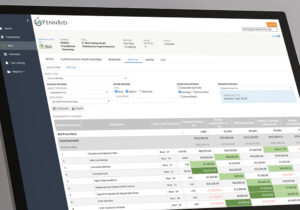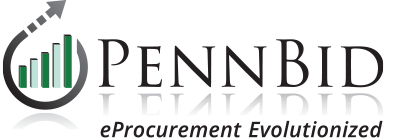For more information on PennBid, contact us or request a 30 minute overview.
Procurement Best Practices – Part 3
Add Value to Your Purchasing Process by Shedding the Status Quo.
 In this edition, we wrap up our series on “Procurement Best Practices – Part 3” by exploring a few more facets of the procurement process. Areas of opportunity for increased efficiency are highlighted, and then all topics in this series are brought together.
In this edition, we wrap up our series on “Procurement Best Practices – Part 3” by exploring a few more facets of the procurement process. Areas of opportunity for increased efficiency are highlighted, and then all topics in this series are brought together.
When these issues are dissected and reassembled holistically, they provide a strong basis for authorities and their design consultants to truly promote comprehensive procurement efficiencies, risk management, and total project cost reduction
Why SRM??
At the foundation of any successful relationship is respect and communication. This is true in our personal lives as much as it is in the workplace. Yes, public agencies must be sensitive in how they interact with vendors to avoid the perception of collusion or coercion; however, Supply-chain Relationship Management (SRM) is a critical component to your overall procurement process.
Having a good working relationship with vendors is important in many areas, and offers numerous benefits like information related to budgeting, evaluation of alternative products and methods, product specifications, and resource timing. Most vendors under- stand there are very few instances in which products or services can be sole-sourced. Therefore, providing clear expectations, open communication, and being respectful of their time and energy is the best way to ensure respect when they’re submitting bids or implementing a project.
Every project will have moments where unexpected issues arise, requiring various parties to come to an agreement or resolution. As the project owner, authorities or design professionals set the tone for relationships. In most situations where an authority is reasonable in their expectations and maintain clear and open lines of communication, the vendors follow suit by being rational and accommodating. Remember, they are also professionals who understand that a happy client is key to their success.
Regrettably, if at any point in the procurement process vendors are disrespected or taken advantage of, they might dig in their heels, in which case project budget will only go in one direction…and it isn’t down.
Technology is Your Friend
Yes, it is 2017, and many of us believe we do a decent job staying in tune with technology and incorporating it in daily routines. Once considered “novel” ideas, business tools such as email, AutoCAD, and cell phones are now common with practically every agency and design firm. However, many authorities and consultants find it difficult to grasp how to apply technology to some of their major business elements, notably the public bidding process. It is very easy to “do what we’ve always done,” but for those interested in finding savings at every turn, there have been considerable advances in systems that auto- mate many of the steps required during the bid management and procurement process, commonly referred to as e-procurement.
Some fear that e-procurement will fundamentally change what they do, when in fact, it only changes how they do it. Email, for example, didn’t change the way people communicated, but rather, changed the ease, speed, and accuracy by which messages made it to the recipients.
It is important to remember that the paper-based bid management method that public agencies have been following for their bidding needs is based on decades old language.
These processes are time consuming, resource intense, and do not take advantage of today’s technological capabilities.
Fear not, with security and integrity as the cornerstone of the sealed bid process, legislative changes to procurement code paved the way for all Pennsylvania authorities to leverage the significant cost savings made possible through e-procurement.
Independent studies have found that the average cost of the paper-based bid management phase of construction projects ranges between 3-6% of total project costs, depending on the size and complexity of the project. This is easily thousands of dollars spent on following a process that (literally) adds no tangible value to authorities or their rate payers.
Streamlining your purchasing/bidding methodology by incorporating e-procurement might be “low hanging fruit” that could yield immediate, quantifiable, consistent, and repeatable savings.
E-Procurement may not eliminate all costs during bidding, but numerous studies have shown savings of 2-5% of total project costs. As these tools are available at little or no cost, authorities and design firms can easily reap the benefits of cost savings when it comes to their purchasing needs.
Putting it All Together
Let’s look back on Best Practices we’ve covered in this series, and see how they come together:
- Make sure the project name is simple and clearly descriptive;
- Provide as much clarity and detail in the scope as possible;
- Ensure funding is in place, or at least be forthright in the funding status;
- Take care not to be difficult or overly demanding, especially with such things as Terms & Conditions and Liquidated Damages;
- If you’re going to offer more leeway to the bidders, set clear baseline performance standards and expectations of your project;
- Think of how time is treated in all aspects of your project, such as giving bidders adequate time to respond to scope changes or newly defined acceptable products;
- Understand and coordinate projects in your region that could impact bidder or material availability;
- Use pre-bid meetings judiciously, and in a manner commensurate with the size and complexity of the project;
- Where feasible, be open to alternative methods and products and plan for alternate bid items to allow easy com- parison of these alternatives;
- Collaborate with your neighbors to realize the benefits of pooled resources. It might take some prep work to delineate contract details; however, every agency could benefit financially;
- Participate in events such as Utility Coordination Meetings, typically organized by PADOT. Knowing other stakeholders’ infrastructure plans can give you great insight on how to develop and prioritize your own plans and could reduce long term restoration costs;
- Maintain good relationships with your vendors and bidders. Supply-chain Relationship Management (SRM) is critical to successful project planning and execution;
- Embrace technology and the bene- fits of e-procurement. These tools are available at little to no cost, are easy to use, and can be adapted to virtually any degree of techno-competency.
We’ve covered a lot in this series, and unless you feel your organization needs a complete overhaul, it’s not necessary to tackle all of these at once. Determine which areas you excel and spend time focusing on improving others.
By taking a strategic look at all the elements that affect your procurement process, you may find it can be very manageable to achieve measurable successes with very little effort. If you aren’t quite sure where to start, begin with baby-steps: identify one area of your procurement process, and begin framing out why and, more importantly, how it should be improved.
Small successful changes will create the positive momentum needed to foster a cost-efficient mindset for your authority or design firm.
